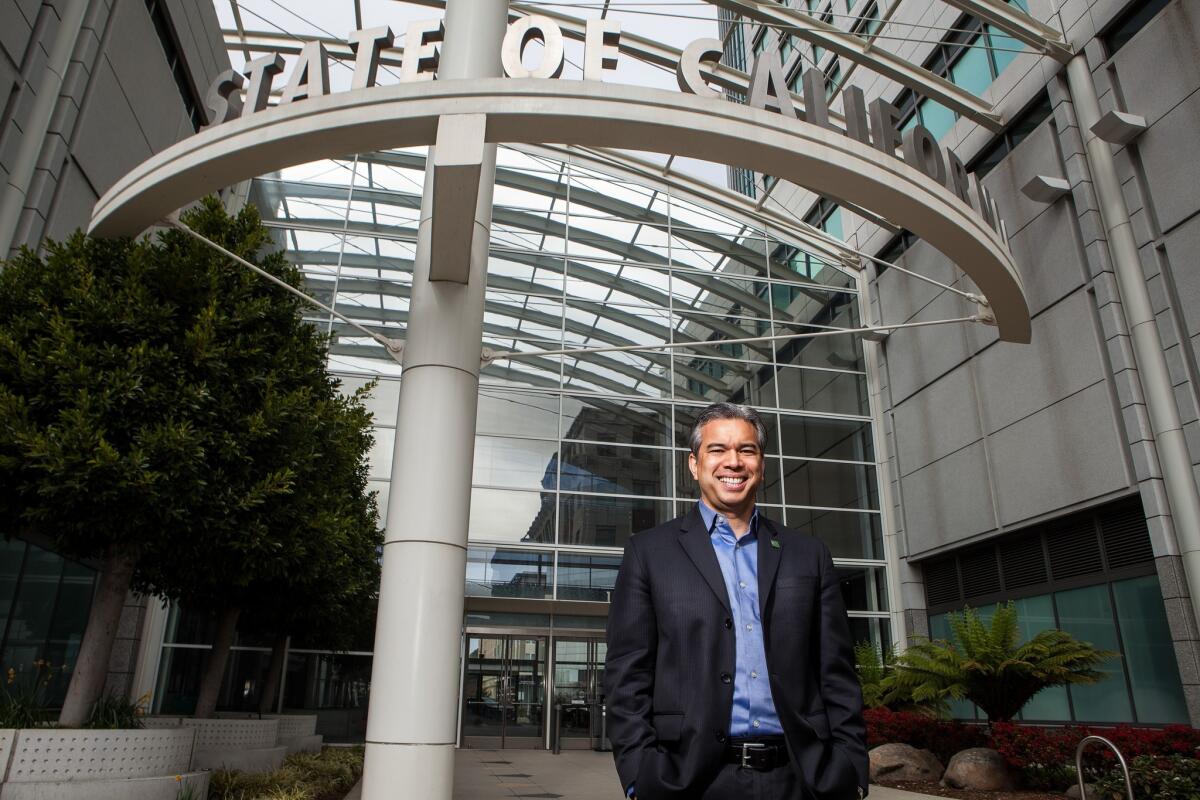With budget balanced, California should cut into credit card debt

- Share via
Any struggling family knows that first you put food on the table, make sure there’s a roof overhead and lay in some daily essentials. Only then can you realistically think about paying down the credit card.
True, you shouldn’t have run wild with the card in the first place. But that’s past. Now, you create a repayment plan and muster some discipline.
That’s where Sacramento sits currently with its daunting credit card debt.
The state’s annual budget that covers daily expenses is finally balanced after years of recession-plagued deficits. Yes, previous politicians deserve criticism for bad planning. They gave away unaffordable tax cuts and spent lavishly, especially for generous public employee pension upgrades.
But the treasury has been replenished because of the Legislature’s program cutting, Gov. Jerry Brown’s soak-the-rich tax increase and a recovering economy. Moreover, two years ago, there were some modest pension rollbacks for future state employees and teachers.
Now it’s time to tackle those potentially crippling credit cards — especially the unfunded liabilities for retiree pensions and benefits.
Brown listed them in January while unveiling his budget proposal. The unfunded liabilities totaled $218 billion — including $80 billion for teachers’ pensions, $64 billion for state retiree healthcare, $46 billion for state employee pensions, $25 billion for University of California pensions and retiree healthcare and $3 billion for judges’ pensions.
The most troubling, by far, is the big hole in the California State Teachers’ Retirement System, called CalSTRS.
To fill it, there’ll need to be substantially more contributions from the state, the school districts and current teachers — at least $4.5 billion annually, the governor reported. Or else the system will go flat broke in 30 years.
Roughly $6 billion a year is being kicked in now. But about $12 billion is being paid out in pensions to roughly 246,000 retirees plus 23,000 surviving spouses.
Full confession: I’m in the latter category. But even if the fund ever did go belly-up, I wouldn’t be around to see it. And those who were would still get their pensions because the state is legally on the hook for them. Sacramento would need to either impose a massive tax increase or drastically cut back other services to make the pension payments.
This is a good place to put teachers’ pensions in perspective. Unlike most public employees in California, teachers aren’t entitled to Social Security. They foolishly declined to join the Social Security system back in the 1950s, thinking CalSTRS would suffice and their take-home pay would be fatter. For the most part, they’re not even allowed Social Security benefits from deceased spouses.
The average teacher’s pension is $3,600 per month after typically spending 26 years in the classroom. Some get retiree health insurance; others don’t. That’s up to collective bargaining in the local district.
Teachers contribute 8% of their pay into the pension system. School districts kick in 8.25%, and the state has been putting up a measly 3%, or around $1.4 billion annually. Until the late 1990s, the state was contributing 4.6%. But then, fantasizing that the system was flush, the state reduced its payments while increasing retiree benefits. Go figure.
Meanwhile, CalSTRS’ investment portfolio plunged during the recession like almost everyone else’s.
And here we are — with the pension hole growing $23 million deeper every day.
Even if the system did begin pulling in an extra $4.5 billion a year, it would require $240 billion to erase the $80 billion unfunded liability over 30 years. Think the total cost of a home mortgage with interest.
As an added hurdle, CalSTRS, unlike other pension systems, can’t just order contributors to send it more money. Only the Legislature and governor can decide that.
Brown originally proposed thinking about it for another year, then taking action in 2015 after the election.
Fortunately, Assembly Speaker John A. Pérez (D-Los Angeles) — running for state controller — insisted that the Legislature stop procrastinating and take concrete steps toward solvency this year.
“This is not an issue that can wait,” Pérez says. “Getting CalSTRS into a solid long-term position is essential to turning around California’s finances.”
Brown said fine. You guys work it out.
Freshman Assemblyman Rob Bonta (D-Alameda), chairman of the public employees and retirement committee, has been holding hearings with his Senate counterparts.
“It’s the biggest unfunded liability in the state of California,” says Bonta, noting that many cities also have huge pension deficits. “We believe it’s critical to act this year.”
Every interest — teachers, districts, the state — agrees there must be “shared pain,” Bonta says.
The solution they’re moving toward, he says, is to increase everyone’s contributions. Tentatively, teachers would start forking over 10.8% of their pay. In return, the retirees’ annual cost-of-living adjustments would be guaranteed in law. There’d also be a similar contribution boost from the districts. And the state would return to chipping in 4.6%.
“My view,” says David Crane, a wealthy investor, advisor to former Gov. Arnold Schwarzenegger and arguably California’s leading pension scold, “is that the biggest contributor has to be the state. It should not be the districts who don’t have enough money anyway. And these teachers didn’t do anything wrong.”
Crane adds: “The insiders make this stuff as obscure and complicated as possible because they don’t want you to understand it. They want to act like the Wizard of Oz behind a big black curtain.”
This much is easy to understand: Sacramento needs to begin paying down the credit cards and living within its means. That has always been simple to comprehend, just ridiculously hard to heed. But now there are no excuses.
More to Read
Sign up for Essential California
The most important California stories and recommendations in your inbox every morning.
You may occasionally receive promotional content from the Los Angeles Times.











